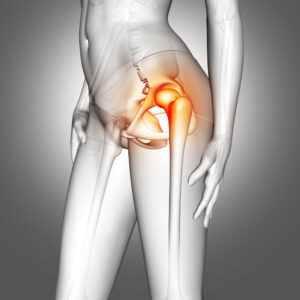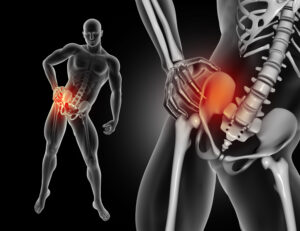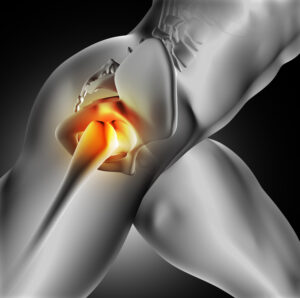Hip Replacement- A type of Hip Treatment
Hip replacement surgery is a type of Hip Treatment, which entails removing the worn-out or injured hip joint and replacing it with a prosthesis, an artificial joint. In this Hip Treatment, a metal, plastic, or ceramic ball and socket make up a prosthesis. With a hip replacement, the patient can enjoy his daily activities and be pain-free.
Hip pain is frequently brought on by hip arthritis. The joint becomes inflamed and painful when arthritis develops. Osteoarthritis, rheumatoid arthritis, Ankylosing spondylitis, Systemic lupus erythematosus, and Psoriatic arthritis are the five kinds of hip arthritis that can be painful. Although there is no known cure for arthritis, there are therapies and medications available to address its signs and symptoms.
An autoimmune condition that usually affects the joints is rheumatoid arthritis. It is brought on by the body’s immune system mistakenly targeting healthy body components. As a result, there will eventually be bone erosion and joint deformity. It damages the lining of the joints, producing discomfort and swelling. Read more about Hip Replacement Surgery.
Hip Arthritis
Hip arthritis is a degeneration of the hip joint’s cartilage. The ball of the hip joint is located at the top of the thighbone (the femoral head). Cartilage separates the ball from the socket (the acetabulum). When the leg moves, the cartilage acts as a smooth surface between the ball and the socket, allowing the ball to float and rotate easily. Stability is provided by the labrum, a thick cartilage that lines the exterior rim of the socket.
thighbone (the femoral head). Cartilage separates the ball from the socket (the acetabulum). When the leg moves, the cartilage acts as a smooth surface between the ball and the socket, allowing the ball to float and rotate easily. Stability is provided by the labrum, a thick cartilage that lines the exterior rim of the socket.
Hip cartilage that has been injured becomes tough. The distance between the bones gets smaller as the cartilage thins. In severe situations, bone scrapes against bone, making movement painful and stiff. Bone spurs—bone growths on the margins of a bone that alter its shape—can also develop when there is contact at any point between bones. There are numerous ways for Hip treatment of Hip Arthritis like surgical and non surgical methods.
Hip Labral Tear
The labrum, the soft tissue that covers the acetabulum (socket) of the hip, can become injured, and this is known as  a hip labral tear. Injury, structural issues, or degenerative conditions can all lead to hip labral tears. Hip discomfort or stiffness are among the symptoms. In severe circumstances, surgery may be necessary to treat a hip labral rupture. Read more about Hip Laberal Tear.
a hip labral tear. Injury, structural issues, or degenerative conditions can all lead to hip labral tears. Hip discomfort or stiffness are among the symptoms. In severe circumstances, surgery may be necessary to treat a hip labral rupture. Read more about Hip Laberal Tear.
Hip Impingement (FAI FEMOROACETABULAR IMPINGEMENT)
FAI is a hip joint with an odd form that rubs two hip bones against one another. The acetabulum and top of the femur (thighbone) rub together due to the pressure (part of the pelvis). FAI can impair movements and hurt.
femur (thighbone) rub together due to the pressure (part of the pelvis). FAI can impair movements and hurt.
FAI can harm the cartilage that cushions the hip if it is not treated. This harm may result in painful joint degeneration or arthritis. To restore the damage, some people require surgery. FAI is likewise known as hip impingement.
Hip Treatment for Impingement can be cured by non-surgical approach & surgical approach namely Arthroscopic Hip Surgery & Conventional Hip surgery.
Hip AVN
The death of bone tissue as a result of a lack of blood supply is known as avascular necrosis. It is also known as osteonecrosis, and it can result in minor fractures and bone collapse. Usually, the process takes several months to years.
A fractured bone or dislocated joint can obstruct blood flow to a section of bone. Additionally, excessive alcohol consumption and long-term usage of high-dose steroid medicines are linked to avascular necrosis.
Anybody may be impacted. However, individuals aged between 30 and 50 are most commonly affected by the condition. Read more about Hip Treatment for Hip AVN.
Hip Preservation- Type of Hip treatment
Hip preservation surgery can be your best course of action if you have a painful hip problem such hip dysplasia, hip impingement, or avascular necrosis (AVN) but haven’t yet experienced substantial arthritis. Hip preservation surgery is kind of hip treatment, which can lower the chance of developing early arthritis and the need for hip replacement surgery down the road in addition to relieving hip discomfort and restoring normal hip function.
Hip Bursitis
Bursitis is a painful bursal swell. Your tendons, ligaments, and muscles are cushioned by bursa, which are sacs filled with fluid. Bursa aid in the smooth movement of tendons, ligaments, and muscles over bone when they function appropriately. Yet, the area surrounding the bursae becomes highly sensitive and uncomfortable as they swell. Hip bursa that are affected by trochanteric bursitis enlarge.
Bursitis is not just a hip problem. It can be cured by Non-Surgical Hip treatment like modifying activities, drugs intake, physical therapy & injections. Surgical Hip treatment options are also available. It can also happen in the elbow, knee, and shoulder joints. Acute bursitis, which is transient, or persistent bursitis (long-lasting).